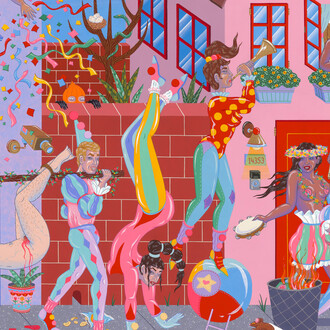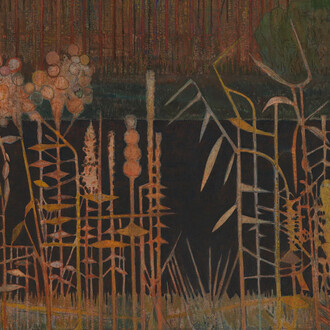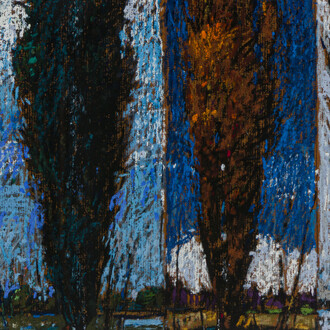My interest as a painter is in the fragile and ever-changing phenomena of the temporal world in which we live. There is a subtle and rich beauty in our lives when we honor this seemingly obvious truth. I paint plants because they reflect this truth in their annual cycles through the season that come about through exposure to light.
(Anne Appleby, 2008)
parrasch heijnen is pleased to present Anne Appleby: Array, the gallery’s second solo exhibition with the Montana-based artist (b. 1954, Harrisburg, PA). Anne Appleby observes the natural environment in her rural Montana surroundings and across North America through an acute awareness of color. The artist’s edge-to-edge color field paintings are composed of multi-panel works often in grid form, revealing chromatic shifts in the context of sequential development. Each panel is a complex and luminous documentation of time, encapsulating the potentiality of the regeneration of the natural world and its cycles.
Inspired by the Bandolier bag (gashikibidaagan), a ceremonial Ojibwe woven shoulder bag that incorporates motifs of floral and plant life found throughout the Great Lakes, the works in this show reflect the artist’s deep connection to nature. Following graduate school, Appleby studied for fifteen years with (Anishinaabeg) Ojibwe artist and holy man Ed Barbeau and connected with her own Ojibwe heritage. Through her apprenticeship, she learned and refined processes of intense meditative awareness in nature as well as traditional Ojibwe art techniques such as creating mineral pigments. Later Appleby studied under (Ayisiniwok) Cree medicine man, Pat Kennedy, learning the medicinal properties of plants and their traditional uses. The tenor of Appleby’s work reflects the sensation of that observational practice and resides at the core of her philosophical approach to painting.
The richness in color and depth of each of the artist’s works is a journey of shifting tonal densities and subtle layers of oil and wax mediums, sometimes reaching up to 50 layers. In requiem for an Aspen, 2015, a two-panel work included in the show, Appleby captures the fleeting moments of tranquility in a study of the imprints of light upon the bark of an aspen tree. Through a depiction of the essential components of plants, Appleby introduces non-linear narratives within her work through a filtering of the subtle shifts in seasons, atmospheric conditions, weather, minutes, and hours of life cycles. This built-up color honors both the cyclical nature of life and a distilled moment in time.
Responding to the formal language of landscape painting, Appleby echoes the subjectivity of the Romantic period with her focus in depicting the depth and emotive qualities of singular moments. Incorporating the form of concrete abstraction in her study of color, Appleby subverts the dialectic between objective/subjective representation, moving between the states in contemplation of nature’s ephemeral and transitory existence. A quiet urgency underlies Appleby’s work and her exploration between time and nature, inviting viewers into a collectiveness that is interdependent with the health and beauty of the environment.
















